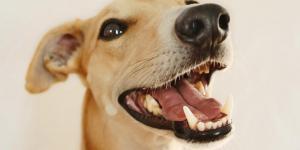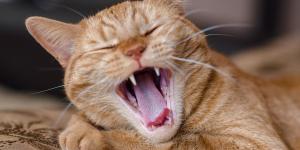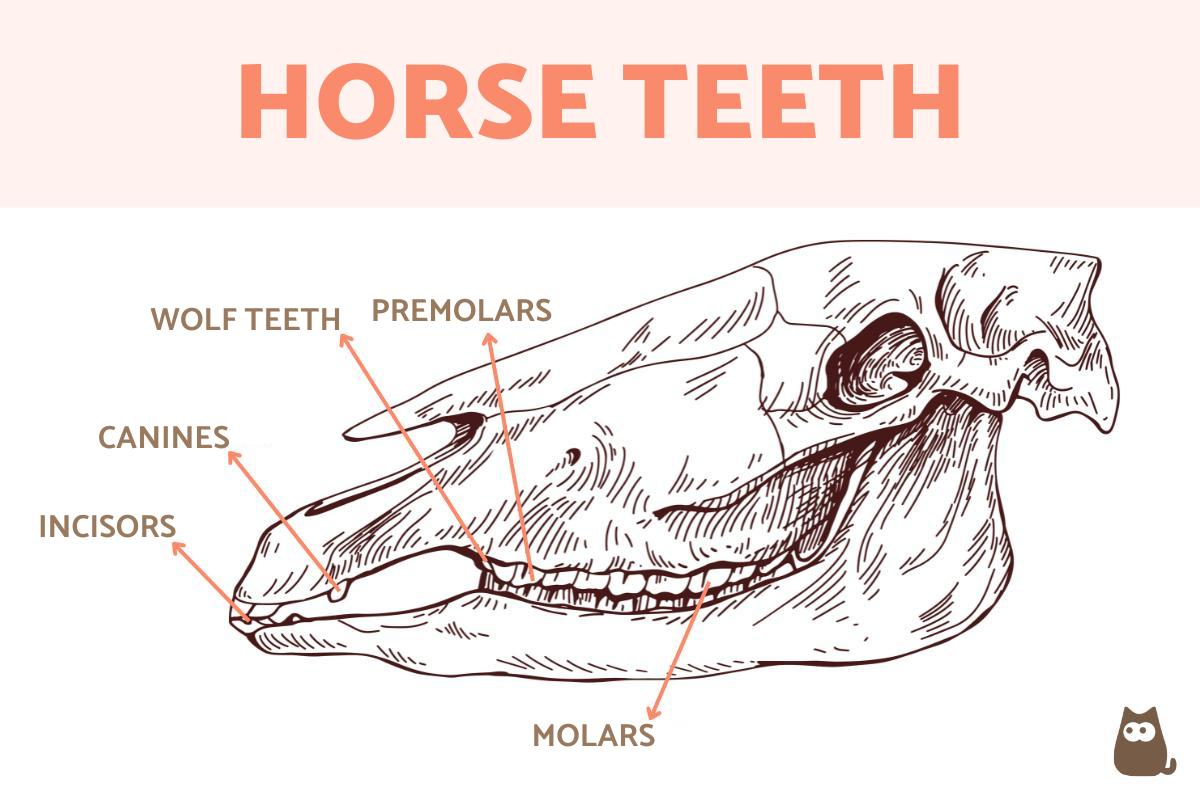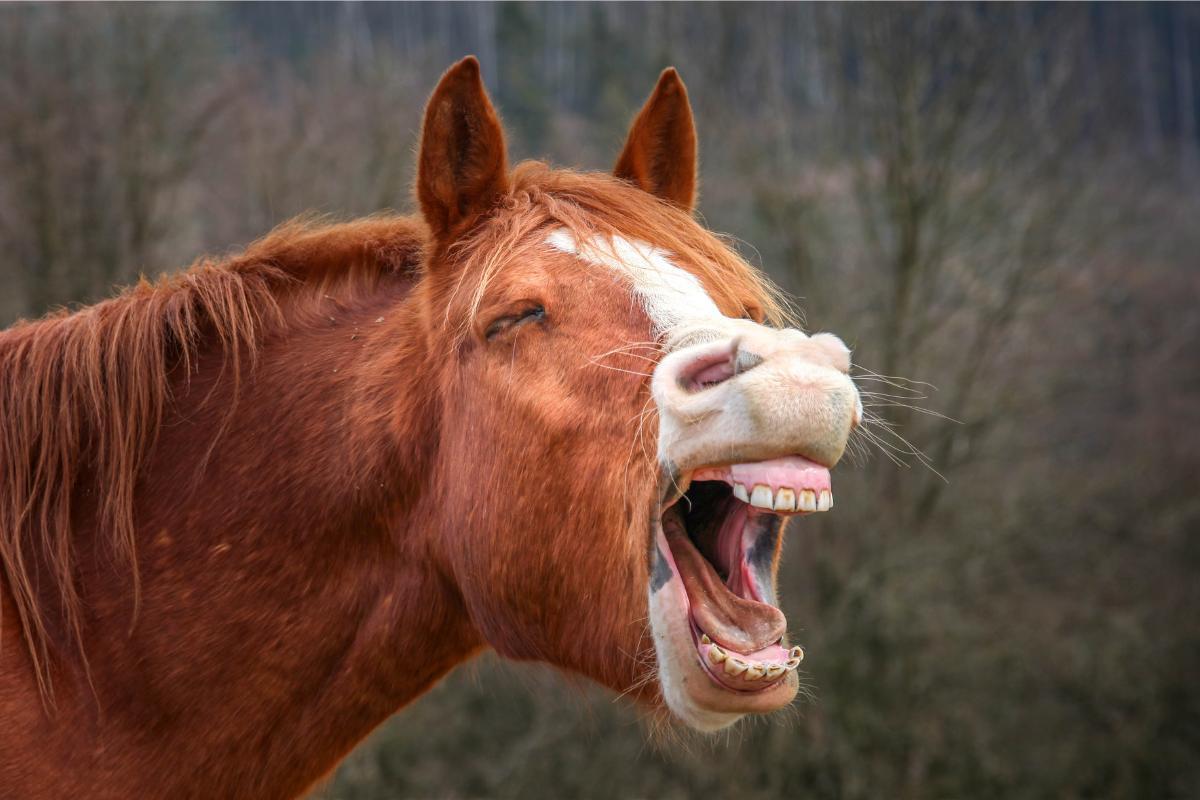How Many Teeth Do Horses Have?



See files for Horses
Horses have different amounts of teeth depending on their age and sex. This is because a horse's teeth will change as they develop. The deciduous milk teeth will be replaced by the permanent adult teeth, although this will happen at different stages. Not all types of horse teeth will develop in the same way. Individual horses regardless of sex will sometimes develop additional teeth. These supernumerary teeth in horses can sometimes cause problems and will need to be removed.
At AnimalWised, we ask how many teeth do horses have? We take a detailed look at the different types of horse teeth according to sex and age. We explain the physical characteristics of horse teeth anatomy, as well as other factors we should consider when caring for a horse's dentition.
How many teeth does the horse have?
A dental formula is the system for summarizing the number and location of an animal's teeth. Each animal has their own dental formula which may change by species and other factors. This schematic presentation shows us how a healthy dentition of an animal should look. When checking the dental health of a an animal such as a horse, we can use the dental formula to see if they have any oral health issues. A dental formula includes the following:
- Tooth order: incisors (I), canines (C), premolars (P), and molars (M).
- Fractions: the dental formula is read out in fractions, with the of each numerator referring to teeth in the upper jawbone (the maxilla) and the denominator referring to the lower jawbone (the mandible).
- Total teeth: both the numerator and the denominator of each fraction refer only to half of each jawbone since they are symmetrical (i.e. there are the same number of teeth on each side). To know how many teeth does a horse have in total, it is necessary to multiply the dental formula by two.
With this in mind, we can find out how many teeth horses have. It is important to make a distinction when we do so. As with humans, horses have less teeth when they are younger. They have two types of dentition:
- Deciduous or milk teeth: start to emerge around 8 months of age and will start to shed by around 2.5 years.
- Permanent or adult teeth: the horse should have full adult dentition around the age of 5 years.
For this reason, when we ask how much teeth a horse has, we need to consider their age. We also need to consider sex. Even when fully developed, male and female horses have a slightly different number of teeth. With these factors in mind, we ask how many teeth do horses have?:
- Milk teeth of foals: 2x (I 3/3, C 0/0, P 3/3, M 0/0). Regardless of whether they are male or female, foals have a total of 24 teeth.
- Adult horse teeth: 2x (I 3/3, C 1/1, P 3-4/4, M 3/3). This formula shows that some horse have a supernumerary tooth in the premolars (P 3-4/4). This is because they may have additional teeth known as ‘wolf teeth’. Depending on whether a male adult horse has wolf teeth, they can have between 40 to 42 teeth.
How many teeth does a female horse have?
We already know the amount of teeth of foals and adult male horses. We now investigate how many teeth female horses have:
- Adult mare teeth: 2x (I 3/3, C 0/0, P 4-3/3, M 3/3). Since female horses can also have wolf teeth, this means they have a total of 36-38 teeth.
Mares generally do not have canines, although they can appear in a minority of cases. These teeth are known as tushes. Most males have them, but only a minority of females have them. These extra teeth can be problematic, especially if they grow into the cheek[1]. In these cases, the tooth needs to be removed.
What are horse teeth like?
Now that we know how many teeth a horse and a mare have, we need to explain what are the main characteristics of a horse's teeth. As with other types of animals, horses can be categorized by their type of teeth. In this way, a particular horse may be considered one of the following:
- Heterodonts: if they have teeth of different types (incisors, canines, premolars and molars).
- Hypsodonts: although their teeth have limited growth (they only grow for 1.5-2 years after their eruption), they erupt throughout the life of the animal (about 2-3 mm per year). The state of the eruption and the amount of wear experienced by a given horse can be a useful way to tell the animal's age.
- Diphyodonts: they have two types of dentition (the milk or deciduous dentition and the permanent dentition). Specifically, horses have a series of milk teeth that change over time (incisors and premolars) and a series of permanent teeth that only erupt once in a lifetime (canines, molars, and also the first premolar). There is also the wolf tooth which may occur in some animals.
When do horses lose their teeth?
As we have mentioned, horses are diphyodont animals. This means they have two types of dentition, the milk dentition and the permanent dentition. Not all teeth are replaced when the adult teeth erupt. Incisors and most premolars do fall out, but canines, first premolars and molars only appear once during a horse's lifetime.
For this reason, the development of adult teeth is a long process. Here we detail when the different types of teeth emerge and at what age the different types of teeth are replaced. In this way, the teeth indicate the approximate age of a horse:
- Central incisors: the milk central incisors appear between birth and the first 2 weeks of life. Permanent central incisors erupt at 2 and a half years.
- Middle incisors: the milk middle incisors emerge between 4-6 weeks of age. Permanent middle incisors erupt at 3 and a half years.
- External incisors: the milk external incisors appear between 6-9 months of life. Permanent external incisors erupt at 4 and a half years.
- Canines: generally only appear in male horses and usually emerge at 5 years of age. In females they appear sporadically.
- 1st premolar or wolf tooth: does not always appear. When it does, it emerges at 5-6 months of life. Unlike the other premolars, the first premolar is permanent, i.e. it is not replaced.
- 2nd, 3rd, and 4th premolar: milk premolars erupt in the first weeks of life and shed at 2½, 3, and 4 years, respectively.
- 1st molar: erupts between 9-12 months.
- 2nd molar: erupts at 2 years.
- 3rd molar: erupts between 3.5-4 years.
If you want to learn more about horse development in general, take a look at our article on how long do horses live?

Horse teeth anatomy
As we have mentioned in previous sections, horses have 4 types of teeth. These are the incisors, canines, premolars and molars. Each of these teeth has three distinct parts:
- Crown: it is the visible part of the tooth.
- Root: is the part of the tooth included in the alveolar bone of the maxilla or mandible.
- Neck: it is the limit between the crown and the root.
Both the crown and the root are essentially made up of dentin. The crown is covered by enamel (which is the hardest and most mineralized tissue in the body) and the root is covered by cementum (a tissue similar to bone).
The central portion of each tooth (the pulp cavity) is occupied by the dental pulp. This contains the vessels and nerves that supply and innervate the tooth. The apparatus that supports each tooth is known as the periodontium, and is made up of the gum, the periodontal ligament, the cementum that covers the root of the tooth and the alveolar bone.
Although all teeth have a similar structure and composition, each type of tooth has particular characteristics, adapted to a specific function.
- Incisors: the teeth in charge of grasping and cutting food. They are long and narrow and have a slightly marked neck. The occlusion surface presents an invagination, known as the infundibulum, which is used as an indicator to determine the age of the horse.
- Canines: are defense teeth that are separated from the incisors by a space called a diastema. They are considered vestiges of the canines that the omnivorous ancestors of horses had. The upper canines are absent in mares, although the lower canines may be present in a rudimentary form.
- Premolars and molars: work by crushing and crushing the food. Molars and premolars are easily confused, since morphologically they are almost identical.
Now that you know how many teeth a horse has and when they lose their baby teeth, we can learn more about how equines use their teeth. This can be discovered in our article on what do horses eat?

What does it mean to float a horse's teeth?
Floating is one of the most common treatments in equine dentistry. It involves the removal of sharp points in a horse's teeth. The upper teeth usually sharpen into the cheek, while lower teeth can cause damage to the tongue.
The reason for sharpness in horse teeth is due to the way they chew their food. Moving the jaw from side to side while chewing can cause the teeth to grind in such a way that they become uneven. This is especially common in horses since they eat a lot of roughage which takes longer to break down. The treatment of horses in captivity means they are more likely to require floating than wild horses.
Since chewing can cause the surface angle to change, it can cut the soft tissue of the mouth such as the cheek or tongue. Floating is a mild dental operation which uses a tool called a ‘float’. These are rasp-like tools which grind down the sharpened teeth and prevent them from causing more damage.
If you want to read similar articles to How Many Teeth Do Horses Have?, we recommend you visit our Facts about the animal kingdom category.
1. Quinn, G. C., Tremaine, W. H., & Lane, J. G. (2005). Supernumerary cheek teeth (n = 24): clinical features, diagnosis, treatment and outcome in 15 horses. Equine veterinary journal, 37(6), 505–509. https://doi.org/10.2746/042516405775314808
- Rodriguez, L., & Uribe, A. (2011). Equine Dentistry: Overview and Importance in Veterinary Medicine. Veterinary Medicine Journal, 22, 1-10.







